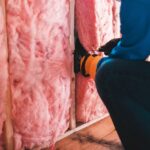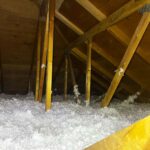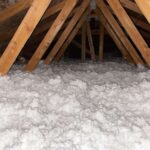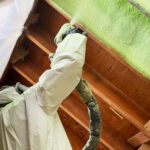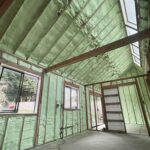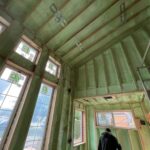Air leaks may appear to be minor issues, but they can have a significant impact on household energy expenses. These tiny gaps and cracks allow heated or cooled air to escape, making HVAC systems work harder.
The result? Higher energy costs and a less comfortable home environment.
Common Sources of Air Leaks
Understanding how air leaks affect energy consumption begins with recognizing where they occur. Common problem areas include gaps around windows, doors, attics, and crawlspaces.
Even tiny cracks in walls or flooring can contribute to energy loss over time. While these leaks might not be visible, their impact becomes clear when energy bills rise.
Air Leaks + Energy Bills = Bad News
As warm air escapes in the winter and cool air seeps out in the summer, homeowners pay more to maintain indoor comfort. This issue is particularly challenging in areas with extreme weather conditions.
When heating or cooling systems must run more frequently, energy usage increases, leading to higher utility bills.
Temperature Imbalances from Air Leaks
Air leaks increase energy bills and create inconsistencies in indoor temperature. Some rooms may feel colder or warmer than others, leading to discomfort.
This uneven temperature distribution often prompts homeowners to adjust thermostats, increasing energy costs.
Sealing Air Leaks with Spray Foam Insulation
Sealing air leaks is one of the most practical steps homeowners can take to reduce energy waste. While weatherstripping and caulking are common DIY solutions, they have limitations.
Spray foam insulation offers a more comprehensive solution. By filling every nook and cranny, it creates an airtight barrier that prevents air leakage.
How Spray Foam Insulation Works
Unlike conventional insulation, which could leave tiny gaps or settle over time, spray foam fills every crack. This expansion decreases the possibility of air leaks and forms a continuous seal.
It’s very helpful for uneven surfaces, like attic flooring or around pipes and vents, where conventional insulation could find difficulty offering complete coverage.
Energy Savings and Cost Reduction
Spray foam helps maintain consistent indoor temperatures by sealing off areas where air escapes. This reduces the workload on HVAC systems, leading to lower energy consumption and, ultimately, reduced utility bills.
Homeowners benefit from lower heating and cooling costs and enjoy a more comfortable living environment year-round.
Long-Term Performance
Another fundamental advantage of spray foam is its longevity. Many other materials degrade over time but spray foam retains its shape and effectiveness for years.
This long-term performance provides homeowners with lasting energy savings and fewer maintenance concerns.
More Benefits of Spray Foam Insulation
Choosing spray foam for insulation goes beyond energy savings. It can also contribute to better indoor air quality. When air leaks are sealed, outdoor pollutants, allergens, and moisture have a harder time entering the home.
This creates a cleaner, healthier indoor environment for the entire household.
Why Professional Installation Matters
Homeowners looking to reduce energy costs should consider a professional spray foam insulation service. While DIY methods like caulking and weatherstripping may offer a temporary fix, they rarely provide a complete seal.
Professional spray foam installation ensures every gap is filled, providing an airtight barrier for long-term energy efficiency.
Take Control of Your Energy Usage
Air leaks may be out of sight, but their impact on energy bills is undeniable. Addressing them with spray foam insulation is a proactive step towards reducing energy waste and utility bills and creating a more comfortable home.
Reach out to the spray foam specialists at HD Horne Sprayfoam and Insulation today!



